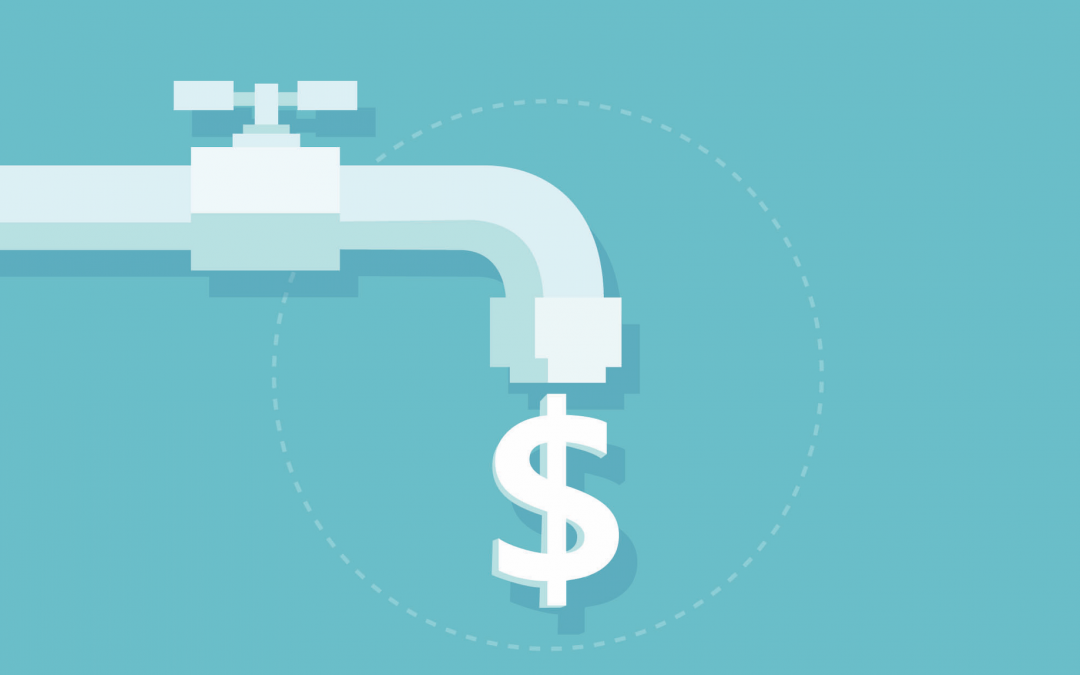Did You Know…
..that water usage accounts for up to 18% of your energy costs? It’s true.
No one likes to use more energy than they have to. It’s bad for the environment, and it’s bad for your wallet. So we’ve put together a list of energy-saving tips and tricks to help lower your water bill.
Tips and Tricks for a Lower Water Bill
Check and Replace Water Tank Insulation
Take a look at the age of your water tank. Older models often have insulation that is outdated and therefore causing a significant heat loss.
If it has an R-value of 24 or higher, then you’re fine. But if it’s lower, you may be losing more in savings than you think.
Adding new, higher-rated insulation can save you 7-16% on your water bill by cutting heat loss by 25-45%.
If you want to save even more, you should consider a full-replacement — especially if your water heater is nearing the end of its lifespan. Newer models are generally more efficient than older ones. So while the cost is a little more upfront, it’s going to save you over time.
Upgrade to a Tankless Water Heater
One of the downfalls of standard tank-style water heaters is that they hold gallons upon gallons of water, and they’re trying to keep it heated. In order to do that, they have to spend energy warming the water, even when you’re not using it.
Tankless water heaters, on the other hand, only heat the water as you need it. That means they are only using energy when you’re using water.
These systems do tend to be a little more costly in the beginning than standard models, but the long-term savings are undeniable. Depending on your water habits, you could see a payback on your tankless system in just 5-6 years.
Fix Leaky Faucets
You may think that drip, drip, drip from your kitchen or bathroom faucet is no big deal, but it’s pulling money right out of your pocket all month long. As it continues to drip, you are slowly increasing your cost per gallon.
Makes sure you call a professional to fix any faulty faucets in your home as soon as you notice them. And if there’s one that’s been an issue for a while, make that call today.
If you would like to see a better idea of how much your leaky faucet is adding to your water bill, check out this drip calculator.
Lower the Hot Water Heater’s Thermometer
Take a look at your water heater’s thermometer. There’s a chance it’s set higher than you need.
When your heater is installed, it’s often left on the manufacturer’s setting – most often 140°F. Your heater is then working all day, using up valuable energy, to keep the water in the tank at that temperature. And that drives up your energy bills each month.
But more often than not, you don’t need it set quite that high. Reach out to a professional like Killeen Plumbing about setting your temperature back to something that’s a little friendlier for your wallet but still comfortable for you and your family.
Switch to Energy Star Appliances
Energy Star is a program created and run by the Department of Energy and the EPA to promote energy efficiency. So if you are looking to replace an appliance to save money on energy costs, look for something that is Energy Star certified.
An Energy Star certified washing machine will use 40-50% less energy than non-certified models and use 55% less water. Dishwashers will be 12% more efficient than other traditional models. And water heaters will save you on both your water bill and your electrical costs.
If you’re interested in learning more or ready to start shopping, here’s a handy buying guide to get you started.
Switch-up Your Hot Water Habits
If you don’t have the budget for a new appliance but want to start saving now, just start with adjusting some of your hot water habits:
- Wash your laundry on a cold cycle as often as possible. Using cold water rather than warm or hot means no excess energy to heat up the water.
- Use the cold rinse setting if available. Many washers have settings that read “Hot/Cold, Warm/Cold, etc.” Use the Cold/Cold setting as often as you can to save energy on both your wash and rinse cycles.
- Shorten shower time and cut out baths. According to Reference.com, the average person uses about 150 gallons of hot water for a single shower. The average bath tub holds 24 gallons when filled completely, so if your preference is to take a bath, you can safely assume you’re using at least half of that. And if you’re someone who lets out water and refills it with warmer water as the temperature cools, you’re using much more.
- Install low-flow showerhead for extra savings. Depending on your choice, a low-flow showerhead can cut down on half of your water use. When combined with a shorter shower, you’ll end up using just a fraction of what you were before.
- Only run your dishwasher when it is full. A smaller load is going to use the same amount of water. So when you run multiple loads that are not full, you use more hot water than necessary.
Contact Killeen to get started on any of the above energy-saving ideas.


Recent Comments